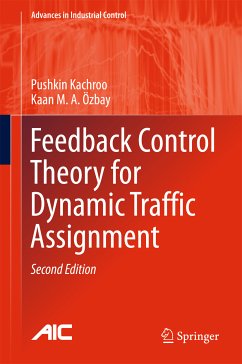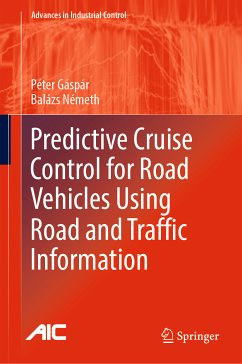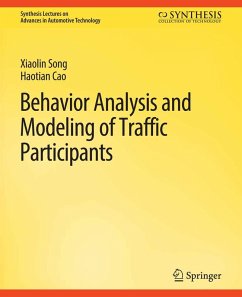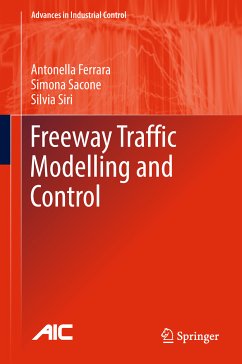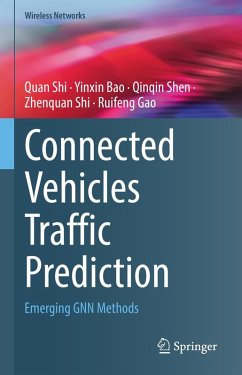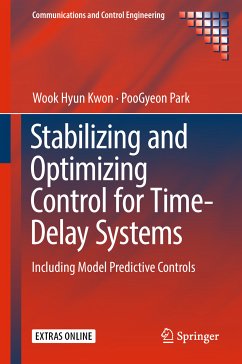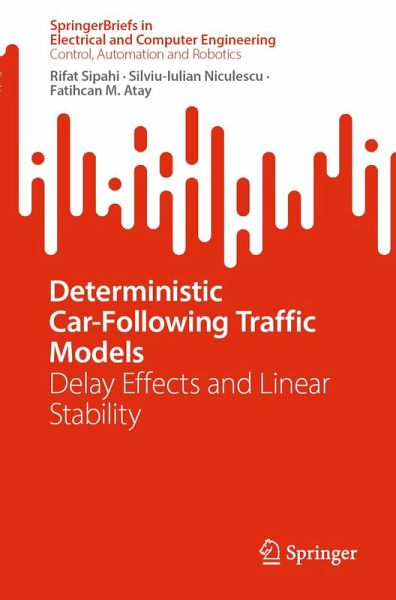
Deterministic Car-Following Traffic Models (eBook, PDF)
Delay Effects and Linear Stability

PAYBACK Punkte
20 °P sammeln!





Comprehensive overview of car-following traffic models which include delays in their system representation
Enhances relevance of theoretical results with illustrative case studies
Provides detailed comparison of existing solutions with author-generated approaches
Enhances relevance of theoretical results with illustrative case studies
Provides detailed comparison of existing solutions with author-generated approaches
Dieser Download kann aus rechtlichen Gründen nur mit Rechnungsadresse in A, B, BG, CY, CZ, D, DK, EW, E, FIN, F, GR, HR, H, IRL, I, LT, L, LR, M, NL, PL, P, R, S, SLO, SK ausgeliefert werden.
- Geräte: PC
- ohne Kopierschutz
- eBook Hilfe
- Größe: 4.12MB
- Text-to-Speech
- E-Mail des Verlags für Barrierefreiheitsfragen: accessibilitysupport@springernature.com
- Alle Inhalte über Screenreader oder taktile Geräte zugänglich
- Navigation über vor-/zurück-Elemente ohne Inhaltsverzeichnis
- Hoher Kontrast zwischen Text und Hintergrund (min. 4.5 =>1)
- Inhalte verständlich ohne Farbwahrnehmung
- Kurze Alternativtexte für nicht-textuelle Inhalte vorhanden
- Text und Medien in logischer Lesereihenfolge angeordnet
- Navigierbares Inhaltsverzeichnis für direkten Zugriff auf Text und Medien
- Keine Einschränkung der Vorlesefunktionen, außer bei spezifischen Ausnahmen
Rifat Sipahi received the B.Sc. degree (2000) from Istanbul Technical University, Istanbul, Turkey, and the M.Sc. (2002) and Ph.D. (2005) degrees from the University of Connecticut, Storrs, CT, all in mechanical engineering. Awarded with a Chateaubriand Postdoctoral Scholarship of the French Government, he has been a postdoctoral fellow at HeuDiaSyC (CNRS) Labs at Universit\'e de Technologie de Compi\`egne, France, during 2005-2006. In 2006, he joined the Department of Mechanical and Industrial Engineering, Northeastern University, Boston, where he is currently a Professor. His research interests include stability, stabilization of dynamical systems at the interplay between multiple time delays and network graphs, human-machine systems and human-robotic interactions. He is the recipient of the 2015 ASME Dynamic Systems and Control Division Outstanding Young Investigator Award, a 2011 DARPA Young Faculty Award, 2022 College of Engineering Outstanding Faculty Service Award, and 2014 College of Engineering Faculty Fellow Award. Among his involvement at various capacities in ASME, IEEE and IFAC sponsored conferences/workshop, he was the co-chair and Editor of 2022 IFAC Workshop on Time Delay Systems. Dr. Sipahi is currently an Associate Editor for Automatica. He is a Fellow of ASME and a Senior Member of IEEE.
Silviu-Iulian Niculescu received his Ph.D. from INP Grenoble, France in 1996. From 1992 to 1997, he was with the Department of Automatic Control and Computers, University "Politehnica" Bucharest, Romania. From 1997 to 2006, he was with the HEUDIASYC laboratory, Compiègne, France, as a researcher at CNRS. He also held a postdoctoral position in the Department of Applied Mathematics, ENSTA, Paris, France, from 1996 to 1997. In September 2006, he joined L2S, Gif-sur-Yvette, where he is currently a research director (senior researcher) at CNRS. He was the head of the laboratory for a decade (2010-2019). Dr. Niculescu was awarded the CNRS Silver and Bronze Medals for scientific research, and the Ph.D. Thesis Award from INPG, Grenoble (France) in 2011, 2001, and 1996, respectively. His research interests include delay systems, robust control, operator theory, and numerical methods in optimization and their applications to the design of engineering systems.
Fatihcan M. Atay received his Ph.D. in Applied Mathematics in 1994 from Brown University, USA. He held positions in both academia and industry before joining the Max Planck Institute for Mathematics in the Sciences, Leipzig, Germany, where he worked as Principal Investigator and the Coordinator of the research group "Dynamical Systems and Network Analysis" between 2002 and 2016. He is now Professor of Mathematics and Head of the Mathematics Department at Bilkent University, Turkey. Fatihcan Atay is the author or co-author of over 100 peer-reviewed publications and the editor of a volume on complex time-delay systems. He is on the editorial board of the "Journal of Complex Networks" and the Springer book series "Advances in Delays and Dynamics". He has organized several international workshops, and in 2012-2015 he coordinated an international consortium of several universities in the context of a large European project. His expertise and research interests are in the areas of dynamical systems, delay-differential equations, complex systems and networks.
Silviu-Iulian Niculescu received his Ph.D. from INP Grenoble, France in 1996. From 1992 to 1997, he was with the Department of Automatic Control and Computers, University "Politehnica" Bucharest, Romania. From 1997 to 2006, he was with the HEUDIASYC laboratory, Compiègne, France, as a researcher at CNRS. He also held a postdoctoral position in the Department of Applied Mathematics, ENSTA, Paris, France, from 1996 to 1997. In September 2006, he joined L2S, Gif-sur-Yvette, where he is currently a research director (senior researcher) at CNRS. He was the head of the laboratory for a decade (2010-2019). Dr. Niculescu was awarded the CNRS Silver and Bronze Medals for scientific research, and the Ph.D. Thesis Award from INPG, Grenoble (France) in 2011, 2001, and 1996, respectively. His research interests include delay systems, robust control, operator theory, and numerical methods in optimization and their applications to the design of engineering systems.
Fatihcan M. Atay received his Ph.D. in Applied Mathematics in 1994 from Brown University, USA. He held positions in both academia and industry before joining the Max Planck Institute for Mathematics in the Sciences, Leipzig, Germany, where he worked as Principal Investigator and the Coordinator of the research group "Dynamical Systems and Network Analysis" between 2002 and 2016. He is now Professor of Mathematics and Head of the Mathematics Department at Bilkent University, Turkey. Fatihcan Atay is the author or co-author of over 100 peer-reviewed publications and the editor of a volume on complex time-delay systems. He is on the editorial board of the "Journal of Complex Networks" and the Springer book series "Advances in Delays and Dynamics". He has organized several international workshops, and in 2012-2015 he coordinated an international consortium of several universities in the context of a large European project. His expertise and research interests are in the areas of dynamical systems, delay-differential equations, complex systems and networks.
Produktdetails
- Verlag: Springer Nature Switzerland
- Seitenzahl: 113
- Erscheinungstermin: 7. November 2024
- Englisch
- ISBN-13: 9783031581649
- Artikelnr.: 72091030
Für dieses Produkt wurde noch keine Bewertung abgegeben. Wir würden uns sehr freuen, wenn du die erste Bewertung schreibst!
Eine Bewertung schreiben
Eine Bewertung schreiben
Andere Kunden interessierten sich für



